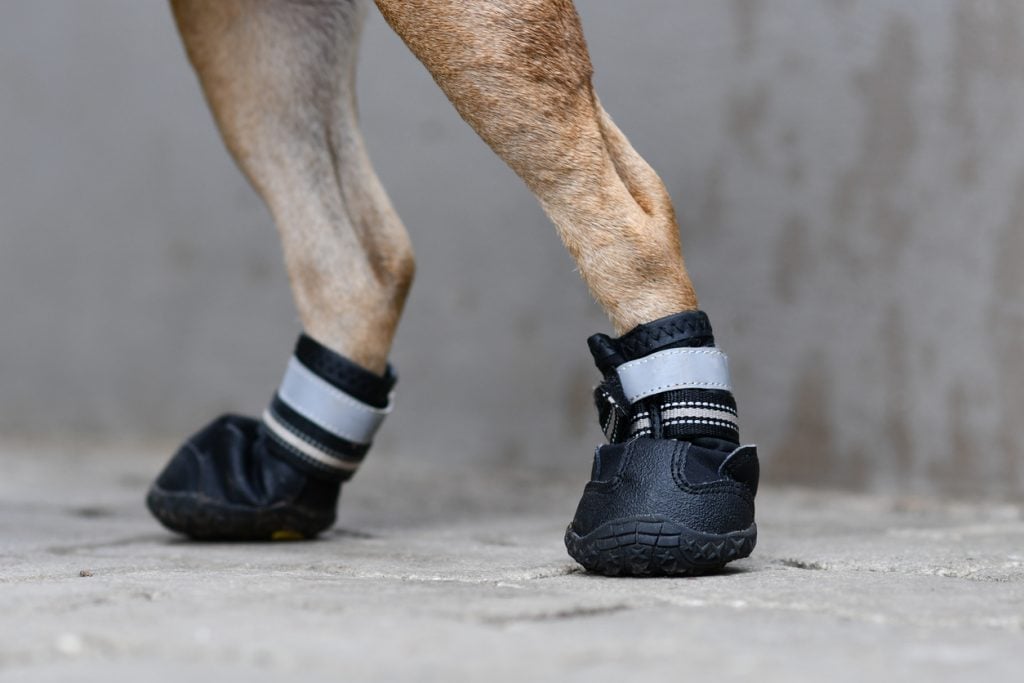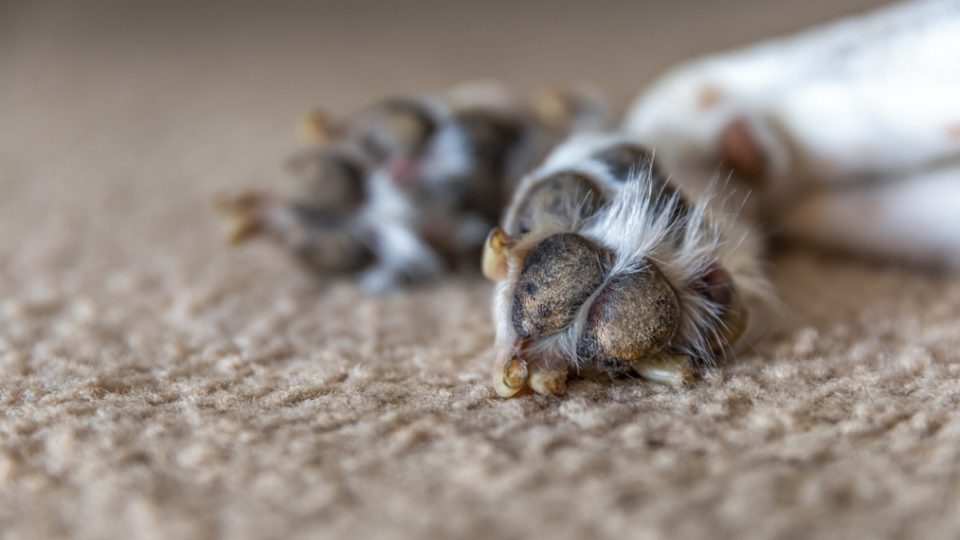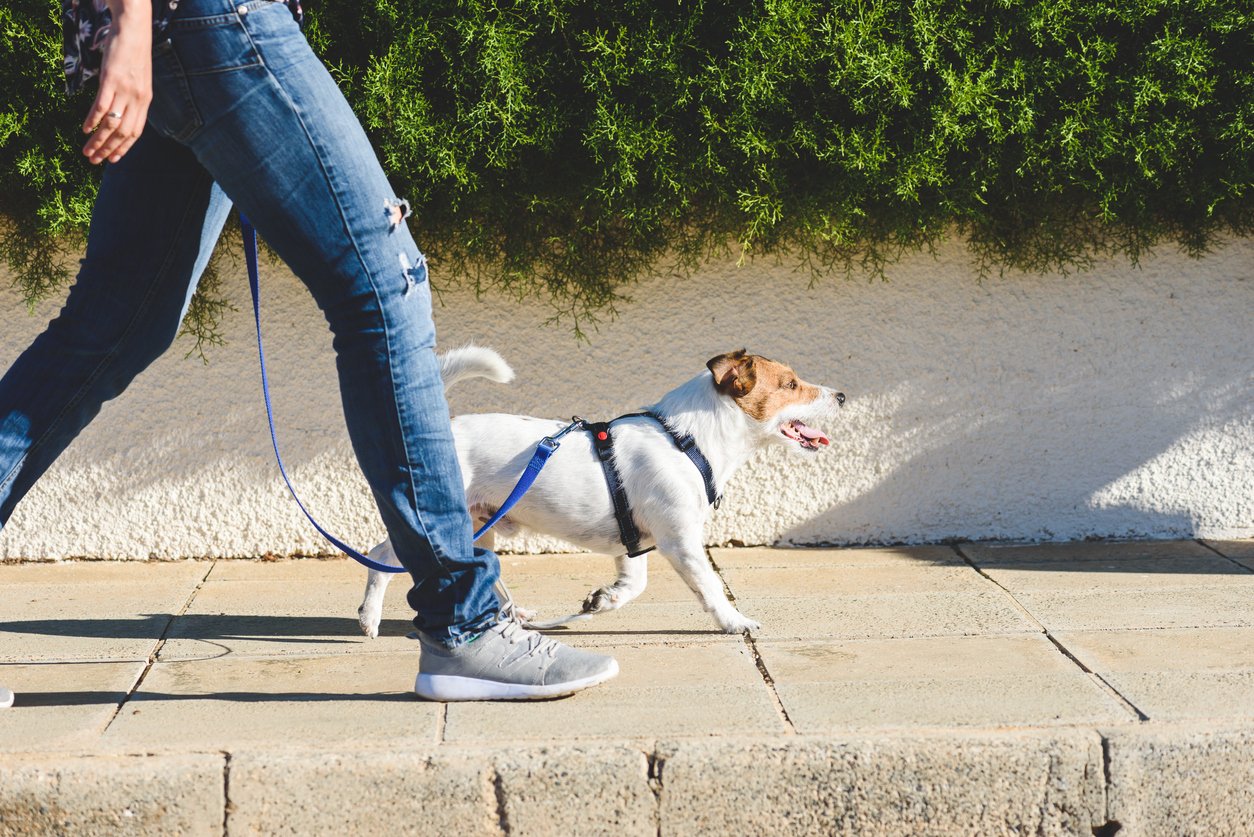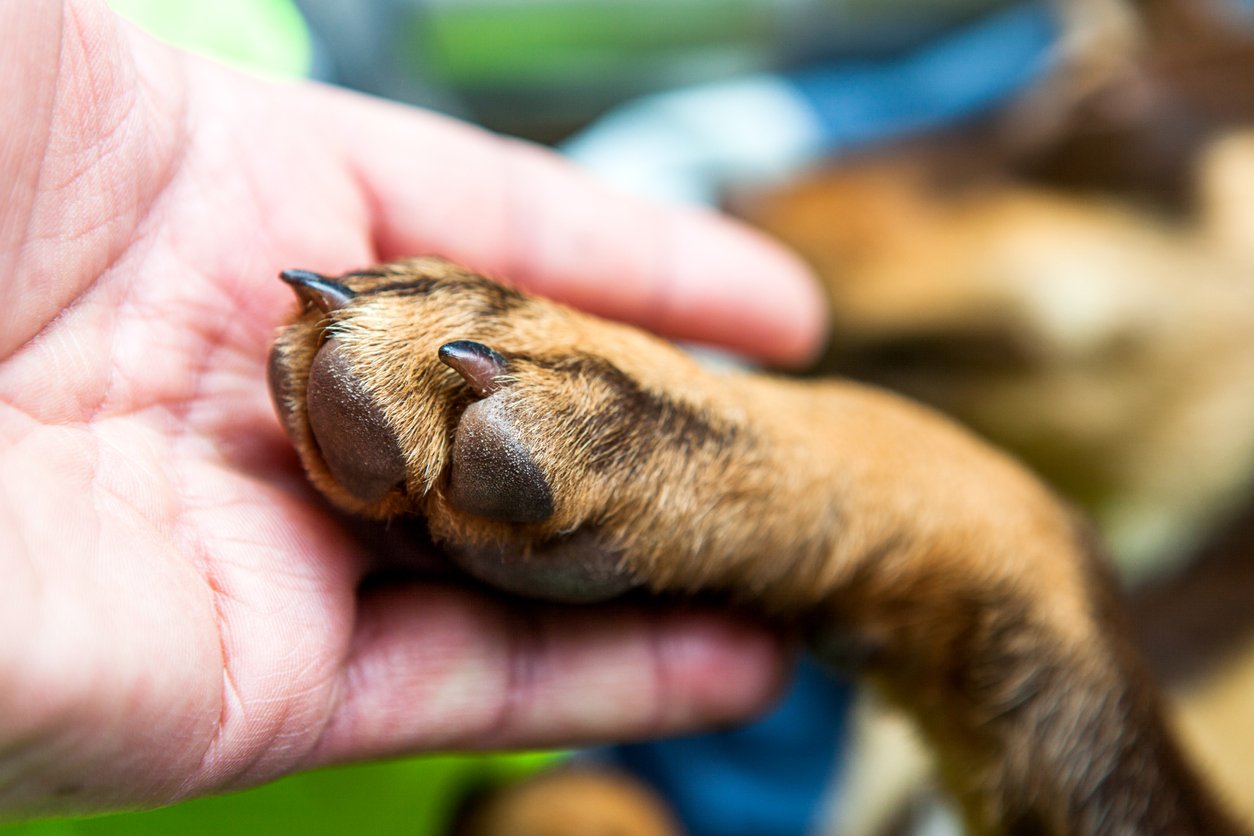As summer continues, experts are reminding dog owners to take extra precautions to keep their pets safe in the heat. While most pet owners know that it’s vital to keep dogs cool to prevent heatstroke, fewer are aware that their dogs’ paws are at risk of another serious condition: paw pad burn.
Your dog’s paw pads are tough, but they are not shoes. Dog paw pads are made of three layers that are thicker than our own skin. These layers cover and protect your dog’s tissue and fat. The outer layer is the thickest, which plays a role in helping to absorb pressure and protect your dog’s feet and tendons.
Because your dog’s paws are still made of the same skin cells, they’re susceptible to injury and overuse. Hot surfaces, like pavement, tarmac, or asphalt can damage them, especially over a prolonged period of time. Burnt paw pads often extremely painful. You may see limping or licking occur, and the condition may require immediate medical attention.
If you’re worried that your dog might have paw pad burn, we’ll help you to spot the symptoms and show you how to soothe irritated paw pads. We’ll also show you easy techniques that will help protect their feet from getting burnt in the first place.
Symptoms of Paw Burn on Your Dogs
If you notice any of the following signs, get your pet off of any hot surfaces as soon as possible and carry them if necessary:
- Limping
- Refusing to walk
- Darker than usual or discoloured pads
- Excessive licking or biting of feet
- Visible blisters
- Extreme redness
- Missing skin
- Missing parts of the pads
You may want to contact a vet immediately. It’s handy to know that this type of injury doesn’t just occur during the summer. Your best friend can also sustain paw burns in extremely cold temperatures or if they come into contact with chemical agents or salt used to melt ice. Temperatures can clue in whether paw burns are likely: during Summer, when outside the temperature is 30°C, tarmac can reach an alarming 57°C, while during Winter we should be extra-careful with our dog’s paws when temperature drops below 0°C.
How to Treat Your Dog’s Pad Burn
Take these steps to treat mild paw pad burns at home
- Soak the paw pads in cool water—NOT ice water—or apply cool water compresses with a clean cloth, changing them frequently for at least 30 minutes
- Gently disinfect the paws
- Pat them dry
- Cut away any hair around the paws (very gently) to help prevent infection
- Bandage the paws or cover with socks to prevent them from being licked
- Check the paws again the next day. If there is no improvement or it’s getting worse, go to the vet
Assess how severe the burns are
Before making any attempts to treat your dog’s paws, though, the first thing to do is to assess how severe the burns are. Veterinary surgeon Dr. Linda Simon, MVB MRCVS, explains the difference between mild and severe burns.
“A superficial or first-degree burn does not penetrate deep into the skin and only the top layer of the pad is affected by the burn. The paw will look red and may feel hot. Thankfully, these milder burns tend to heal quickly with minimal to no intervention.”
Second-degree burns penetrate deeper into the pad. Dr Simon explains, “At this point, we can see oozing and infections would be quite common. These burns are painful and take longer to heal.”
Though third-degree paw pad burns are uncommon, Dr Simon says that they can happen, adding that “deeper burns cause skin sloughing and affect the subcutaneous tissue – these burns are the most dangerous and are difficult to treat.”
How can you tell when you should head to the vet?
According to Dr. Simon, “Anything more than a mild first-degree burn will typically need veterinary attention.” She explains, “If the pad is broken or ulcerated, an infection is possible and veterinary care is needed. Similarly, if your dog is uncomfortable or struggling with their mobility, they need to see a vet for pain relief.”
She goes on to warn, “The pad should never be ‘torn’ or ulcerated – this is a red flag, confirming you need to schedule a vet visit.”
If in doubt as to the severity of the burns, it’s always best to head to the vet to avoid your dog suffering unnecessarily.
How to Prevent Paw Pad Burn
Some dogs are more susceptible to paw pad burns than others. Dogs who spend a lot of time outside already tend to have tougher pads which can put up with more heat, while others have fur that grows between their pads which adds a little extra protection.
Keep an eye on your dog’s behaviour when you’re on walks—if they’re veering off onto grass or pulling back on the lead it’s worth checking their paws. It’s also good to do this if they’ve been playing outside for a while and the weather’s heating up.
The good news is paw pad burns are easy to prevent—just follow these tips.
The 10-second tarmac test
If you’re in doubt about whether it’s too hot to walk your dog, check the surface of the pavement with your bare hand. If you can’t comfortably hold your palm on the surface for 10 seconds then your dog’s paws are at risk of getting burnt. If it’s too hot for you, it’s too hot for your dog!
Walk your dog on grass
Avoid pavements, tarmac and asphalt, which can burn paw pads instantly. Grass disperses much more heat than these surfaces and feels fresher on your dog’s paws, so take the shaded route or drive to the local park.
Timing is everything
During summer, walk your dog in the early mornings or late in the evenings when temperatures—and pavements—are much cooler.
Try dog shoes or booties
If you’re worried about how to protect your dog’s paws from the heat without disrupting their routine you can get them some shoes. They’re an ideal solution if you live somewhere that doesn’t have much shade or many grassy surfaces. Bear in mind that boots take some getting used to for most dogs, so be patient and start off slow by just putting them on for short intervals at a time.
Protective paw lotion
You can add an extra layer of protection with a paw cream for dogs. Apply it before and after walks to soothe dry paws. Bonus: it works wonders on their noses too!

IStock/Firn
The Takeaway
The dog days of summer can be dangerous, but by following our easy tips to prevent paw pad burn you can enjoy plenty of carefree adventures with your best friend.
And if you’re worried that your dog’s paws are burnt and you’re not sure if you should contact a vet, it’s always best to do so just to be on the safe side. They’ll know exactly what to do to help your dog.
Featured Image by IStock/Ryan Hoel




